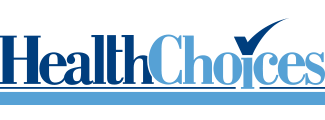Understanding Prescription Drug Addiction
Learn About Prescription Drug Addiction & Abuse
Prescription drugs come in many forms. Stimulants such as Adderall and Ritalin can help treat attention-deficit/hyperactivity disorder (ADHD), while opioid analgesics like morphine and Vicodin can help treat pain. Still other prescription drugs can help treat anxiety and insomnia. While these prescription drugs can help people live full and healthy lives, many of them can also be abused for recreational purposes, possibly leading to addiction and numerous negative effects on a person’s life. Thankfully, however, prescription drug abuse can be overcome with proper treatment by trained professionals.
Statistics
Prescription Drug Abuse Statistics
According to 2011 data from the National Institute on Drug Abuse (NIDA) and the National Survey on Drug Use and Health (NSDUH), 52 million people over the age of 12 have used prescription drugs recreationally. More than 6 million people had used prescription drugs recreationally in the past month. Painkillers are the most frequently abused drug by far, followed by tranquilizers and then stimulants. According to the Centers for Disease Control (CDC), 44 people die each day from prescription painkiller overdose.
Causes and Risk Factors
Causes and Risk Factors for Prescription Drug Abuse
Mental health experts agree that a person’s risk of developing a prescription drug use disorder can be affected by the following factors:
Genetic: As with many other substance use and mental health disorders, a person’s risk of developing a prescription drug use disorder is affected by genetics. People whose family members have abused prescription drugs or other substances are more likely to engage in prescription drug abuse as well. Genetic influences are particularly dominant as a person grows through adolescence and into adulthood.
Environmental: In addition to genetics, a person’s environment affects his or her risk of developing a prescription drug use disorder. Perhaps the most dominant environmental influence is how readily accessible prescription medications are. Simply, people who are regularly prescribed prescription medications are more likely to abuse them. In addition, people whose peers abuse prescription drugs are more likely to abuse prescription drugs as well.
Risk Factors:
- Personal history of mental or physical illness that is being treated with prescription drugs
- Personal history of other substance use disorder
- Family history of mental illness or substance use disorder
- Impulsivity, novelty-seeking, or certain other similar personality traits
Signs and Symptoms
Signs and Symptoms of Prescription Drug Abuse
While the signs and symptoms of prescription drug abuse can vary somewhat widely depending on which drug a person is abusing, the following are some indicators that a person may be abusing prescription drugs:
Behavioral symptoms:
- Taking more of a prescription drug, or over a longer period of time, than one intends
- Unsuccessful attempt to reduce one’s recreational use of prescription drugs
- Investing a great deal of time obtaining, using, or recovering from use of prescription drugs
- Failing to keep up with, or giving up, academic, occupational, or social obligations in favor of using prescription drugs
- Using prescription drugs recreationally despite being in situations where doing so would be hazardous (such as driving or operating machinery)
- Continuing to abuse prescription drugs despite the abuse causing or exacerbating physical or psychological problems
Physical symptoms:
- Slurred speech
- Poor coordination
- Trouble walking
- Rapid or slowed heart rate
- Dilated pupils
- Sweating
- Chills
- Nausea or vomiting
- Weight loss
- Weakness
- Trouble breathing
- Seizures
- Unconsciousness
- Tolerance, or needing more of one’s drug(s) of choice in order to experience a high
- Withdrawal, or experiencing uncomfortable symptoms upon trying to stop using one’s drug(s) of choice
Cognitive symptoms:
- Attention or memory problems
- Confusion
- Stupor
- Craving for one’s prescription drug(s) of choice
Psychosocial symptoms:
- Continuing to abuse prescription medications despite experiencing negative interpersonal consequences from use
Effects
Effects of Prescription Drug Abuse
If left untreated, prescription drug abuse can have serious negative, and even fatal, effects. Some of these effects may include:
- Accidents and injury
- Relational difficulties and relationship strain
- Divorce
- Loss of child custody
- Social isolation
- Aggression
- Poor job or academic performance
- Job loss or academic expulsion
- Onset or worsening of mental health symptoms
- Polysubstance use, addiction, or chemical dependency
- Organ damage
Co-Occurring Disorders
Prescription Drug Abuse & Co-Occurring Disorders
People who have been diagnosed with a prescription drug use disorder may also meet criteria for other mental health symptoms and disorders such as:
- Other substance use disorders
- Antisocial personality disorder
- Depressive disorders
- Bipolar disorder
- Anxiety disorders
- Posttraumatic stress disorder (PTSD)
- Attention-deficit/hyperactivity disorder (ADHD)
- Gambling disorder
Withdrawal and Overdose
Effects of Prescription Drug Withdrawal and Overdose
Effects of prescription drug withdrawal: When a person abuses prescription drugs for a period of time and then attempts to discontinue use, he or she may experience a number of negative effects. These effects will differ depending on which prescription drug a person had been using, but the effects may include:
- Depressed mood
- Nausea and vomiting
- Muscle aches
- Runny nose and watery eyes
- Sweating
- Diarrhea
- Fatigue
- Increased appetite
- Vivid, unpleasant dreams
- Insomnia
- Fever
- Shaking or tremor
- Hallucinations
- Agitation or aggression
- Anxiety
- Seizures
Effects of prescription drug overdose: Although prescription drugs are designed to be safe when used at recommended doses, it is possible to overdose. An overdose occurs when a person ingests more of a drug than his or her body can metabolize or excrete. An overdose is a dangerous and possibly fatal event, and a person who has been abusing a prescription drug and demonstrates some of the signs and symptoms below should receive medical attention as soon as possible:
- Dizziness
- Confusion
- Agitation
- Anxiety
- Hallucinations
- Weakness
- Slowed breathing
- Slowed or rapid heartbeat
- Unconsciousness
- Seizure
- Stroke




